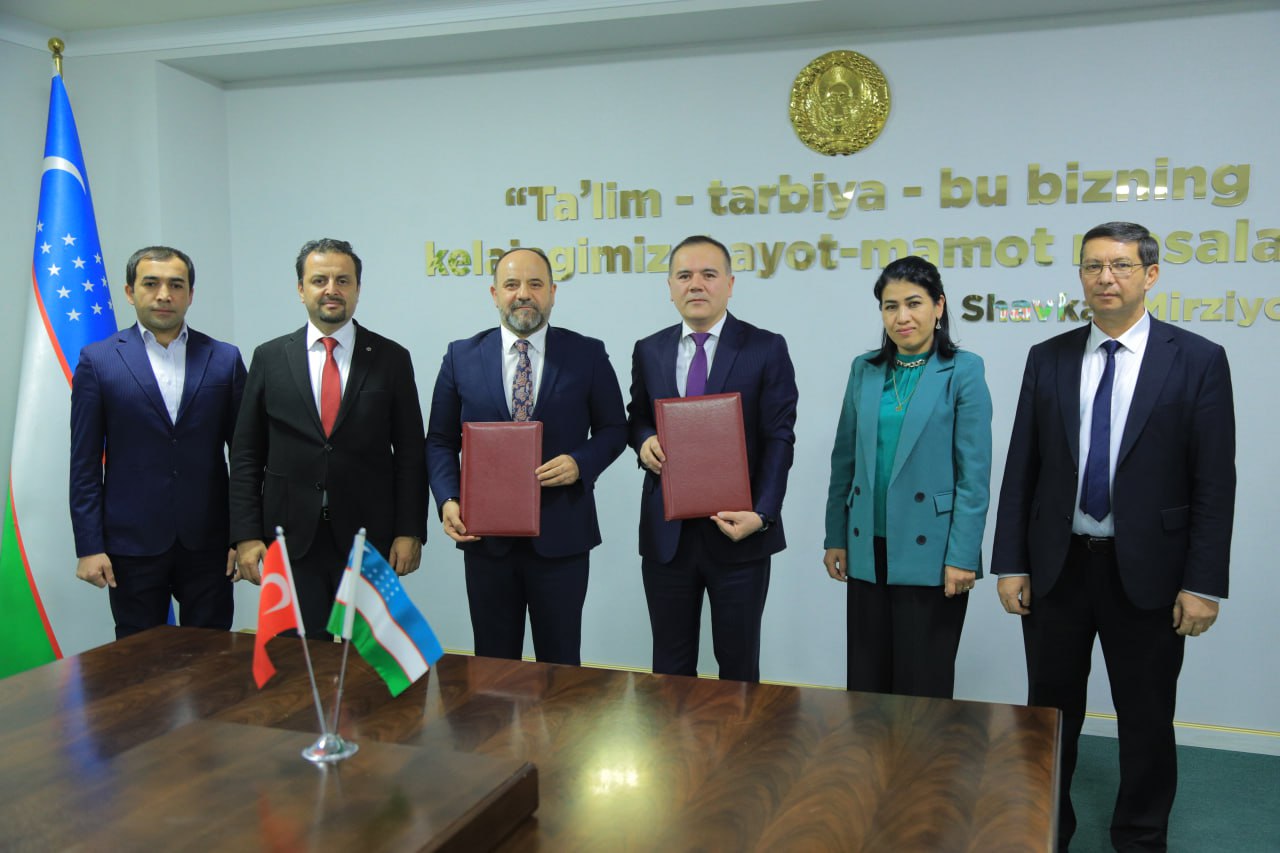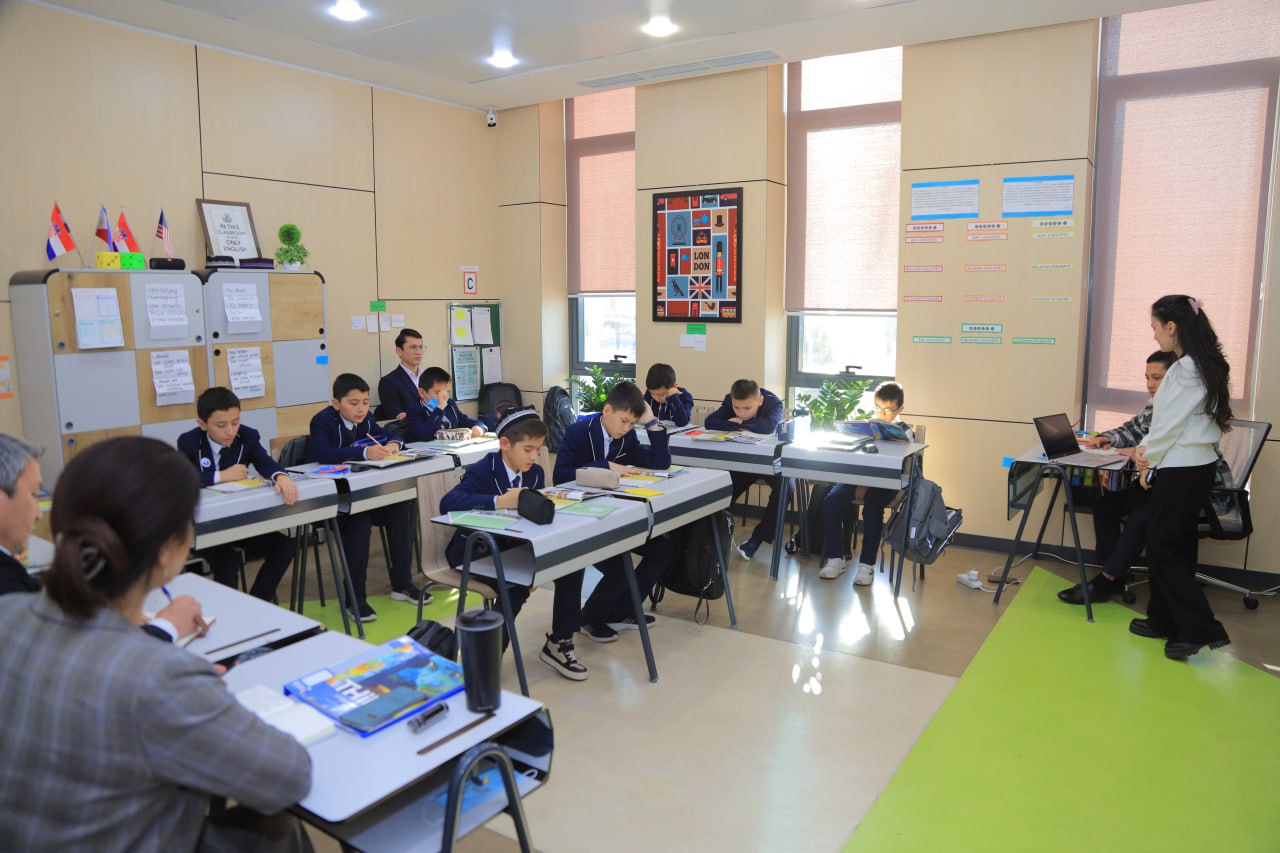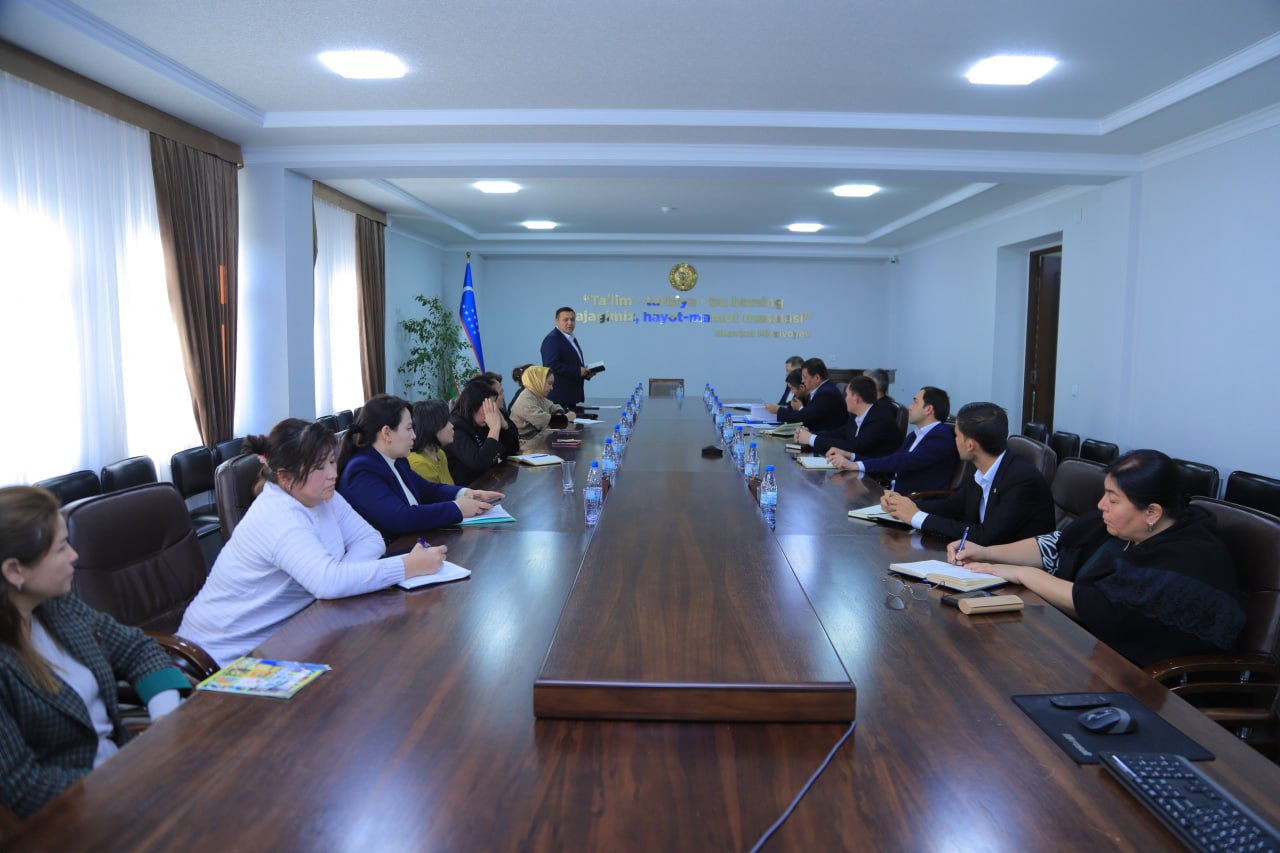NURMATOV KAMOL DJURAKULOVICH
Jizzakh State Pedagogical University,
Sh.Rashidov-4, 130100, Jizzakh, Uzbekistan
Email: mrkamol1986@gmail.com
Abstract: This article deals with the role of digital technologies in the higher education system based on an analysis of their capabilities. The widespread use of digital technologies in the organization of the educational process makes it possible to develop the integration of modern information and communication technologies and educational technologies, to create additional conditions for the continuous development of the professional skills of teachers.
Keywords: digital technologies, information and communication technologies, higher education system, modern education, systematic knowledge.
Introduction
Naturally, as in other areas, the introduction of digital technologies in the education system is fundamentally changing its activities. This technology is a special area of computer science, where a computer or machine imitates the capabilities of the human mind. Today, digital technologies are actively used in all spheres of life – the economy, banking, the service sector, as well as the educational process can serve as a rapid development. In the minds of mankind, the idea is being formed that all problems in society can be solved with the help of digital technologies. In addition, robotization of production and management processes is expected, for example, in the banking sector, the issue of competition between robots and workers. It is possible to increase efficiency and, in a word, radically improve people’s lives through the widespread introduction of digital technologies in the educational sphere. The digital economy is not only a type of activity, but also a business, industrial facilities, quality education and services. The term “digital” refers to the active use of information technology in all areas. If in a conventional economy material goods are considered the main resource, then in the digital economy it is information and data that can be processed and transmitted. Based on their analysis, a solution for this type of management will be developed .
Analysis and results
It is surprising not only that the education system today is absorbed by digital technologies, because it serves as the basis for a serious analysis and pedagogical justification of many things that are offered in the information space today. It should be noted separately that previously we limited ourselves to the introduction of digital technologies in all areas, that is, in industry, the economy, banking and other areas. Today, given the fact that the digital economy is rapidly developing, the position includes the successors of leaders in all areas of digital development [1]. Today, digital technologies are developing in all areas livelihoods, especially where there are economic benefits, and are encouraged at all levels. The dynamics of the processes taking place in the economy requires an active position of the educational community in the analysis and development of proposals for the development of higher education in the context of the digital transformation of the economy.
Improving the Internet infrastructure to improve the quality of services provided by mobile operators, create conditions and privileges for the most vulnerable segments of the population, especially students and youth, to use modern information and communication technologies. The widespread use of digital technologies in the organization of the educational process provides an opportunity to develop information resources, communication tools and remote communication technologies, attract creative students to university digitalization projects, create centers equipped with effective digital technology, classrooms and laboratories . And, it will ensure a strong integration of modern information and communication technologies and educational technologies, in this regard, create additional conditions for the continuous development of the professional skills of teachers [2].
It is necessary to organize and conduct advanced training courses for students on topics such as the use of interactive presentation systems, the development of interactive and multimedia presentations for lectures and seminars, to implement the process of remote listening at any time using interactive presentation systems and virtual rooms, electronic resources. Use virtual reality technology and 3D printers in the development of didactic materials and experimental projects, as well as digital didactics and digital learning models, as well as a scientific network for discussion by teachers and students. Only then will we be able, with the help of digital technologies, to provide students with knowledge at the level of today’s demand, without reducing the quality of education. Separately, it should be noted that today our life is full of techniques and technologies in all aspects . Wherein there is an opportunity for the beneficial use of technology to improve and develop the quality of education. As a result, the learning process is being improved; improvement, the level of education and the effectiveness of personnel training are increasing. An educated generation, professional personnel are the key to the large-scale development of society.
Currently, many schools are equipped with computer classes, and teachers have the opportunity to use modern technology in the classroom. Using a computer in teaching allows you to create an environment that stimulates the interest and inquisitiveness of the child. The computer becomes an electronic intermediary between the teacher and the student. It allows you to intensify the learning process, makes it more vivid and visual, provides an opportunity to conduct learning at an individual pace for each student, and also allows you to free the teacher from a number of tedious functions, for example, endless notes on the board, practicing elementary skills, testing knowledge.
A modern teacher, as one of the most important participants in the educational process, cannot but take into account in his work the results of the constant and rapid improvement of information technology. The scientific and practical activities of modern man, the informatization of society as a whole, makes teachers reconsider the content and methods of teaching in all school disciplines, quickly expanding and deepening it through information obtained using the latest information systems and technologies. The professional activity of a teacher becomes more intense and interesting when using digital educational resources.
We believe that using DERs in physics lessons is not only useful, but also necessary. Firstly, the teacher had the opportunity to brightly and visually conduct the lesson. One of the main stages of any lesson is the explanation of new material. And the teacher should make it as clear and understandable to the students as possible. Children develop visual-figurative thinking, it is easier to keep their attention to the issues under discussion. There is an opportunity to work not only collectively, but also individually, taking into account the individual characteristics of each student. When conducting lessons with digital information resources, the teacher can cover a lot of additional material. The use of interactive models significantly speeds up the process of explaining the educational material and improves its quality. Images of phenomena and concepts that are formed with the help of models and animations are remembered for a long time.
An important aspect is the significant time savings. Of course, when planning lessons, it is necessary to carefully study all types of DERs – not only ready-made electronic textbooks, but also Internet resources. But, constantly replenishing the collection of resources, the teacher accumulates a huge base that can be used at any stage of the lesson. Tasks of a creative and research nature significantly increase the interest of students in the study of physics and are an additional motivating factor. Students gain knowledge in the process of independent creative work. They need this knowledge to obtain a specific result visible on a computer screen. The teacher in such cases is only an assistant in the creative process of knowledge formation.
It is impossible to ignore the fact that not all schools have sufficient material resources and are able to provide physics classrooms in accordance with the curriculum of all parallels. Physics is a science closely related to experiments and research. Therefore, an excellent experimental addition to the lessons is the use of DERs. Along with material support, there is an acute problem of the impossibility of conducting experiments for safety purposes. Computer models allow visually illustrating physical experiments and phenomena, reproducing their subtle details that may be unnoticed by an observer in real experiments. The use of computer models and virtual laboratories provides us with a unique opportunity to visualize a simplified model of a real phenomenon. In this case, additional factors can be gradually included in the consideration, which gradually complicate the model and bring it closer to a real physical phenomenon. In addition, the computer makes it possible to simulate situations that cannot be experimentally realized in a school physics classroom, for example, the operation of a nuclear installation or experiments with mercury.
Another important feature of a lesson using a computer is its interactivity, that is, the possibility of dialogue and feedback. Until now, this possibility existed only in the case of direct contact between the teacher and the student. The computer has the ability to provide feedback to both the teacher and the student, being not just a “contact” partner, but also a source of educational information. Using digital educational resources, we can use the following methods of work in physics lessons:
- Computer observations – after the new material is explained or during the explanation, it makes sense to offer students 1-2 observations. Working with an interactive model while learning new material, the teacher can demonstrate this property through the projection equipment.
- Experimental research tasks – tasks for the solution of which it is necessary to substitute the appropriate parameters of the variables and observe the change in the graph. As a rule, students take on such tasks with special enthusiasm. Despite their apparent simplicity, such tasks are very useful, as they allow students to see a live connection between a computer experiment and analytical problem solving.
- Calculation tasks with subsequent computer verification – tasks that must first be solved without using a computer, and then check the received answer.
- Laboratory work – effective resources of the program create a convenient technical base for the implementation of numerous laboratory work of a creative, research nature. When performing laboratory work, the student will have to carry out, for example, plotting function graphs, undertake an individual study of its properties, try to notice some patterns, express their own hypotheses in this regard, and experimentally verify their validity.
- Didactic games – educational material is used as a means of the game; with the help of game techniques and situations, the teacher can stimulate students to physical activity. During the game, attention, observation, quick wits develop.
We would like to note the educational complexes that our lyceum has – this is “1C: Physics. 7, 10 grade” and “Physical experiment” edited by A.I. Fishman. Actively using these complexes, we significantly increase the effectiveness of the lesson. Their uniqueness lies not only in the use of photo, video, audio and animated accompaniment of the lesson, but also in the ability to conduct virtual experiments. This kind of physical experiment is carried out in a regular lesson in a virtual laboratory. Students have the opportunity to study the theoretical material on this issue, conduct research, as well as approximate the results and formalize the work. An exclusive function of working with “Physical Experiments” is the ability to add your personal developments to the educational complex. That is, the teacher can easily add his materials (photos, videos, animations) to one or another paragraph of the electronic textbook.
This electronic textbook allows you to use non-standard experimental tasks for practical activities in the classroom. Students, uniting in groups, look for ways to solve experimental problems, expressing their solutions. The lesson is very productive if the teacher skillfully conducts reflection. The positive aspects that should be noted when working with “Physical Experiments” is the variety of methods for studying the material. The authors offer the opportunity to view the experiment, answer the problematic questions that sound immediately after the experiments, some tasks are research in nature, and some are theoretical.
Educational complex “1C: Physics. 7, 10 grade” has a visual theoretical base, the ability to “palpate” animated models with your own hands when studying a new topic. The use of this resource automatically eliminates the possibility of giving incorrect marks when checking the knowledge of students, that is, the marks are no longer set by the teacher, but by the computer. This also, in turn, significantly reduces the time that the teacher spends on checking independent and practical work. In our practice, we also use independent work with educational complexes of students at home.
An excellent integration of virtual experiments with real ones is the use of the L-micro computer measuring laboratory, which is also actively used in our lyceum. The laboratory is used for demonstration and student experiment. The complex consists of a computer measuring unit, a system of sensors and additional equipment. The computer acts as a universal measuring instrument. Information can be fed to a computer from two sensors simultaneously, it is automatically processed and the result is displayed on the screen in the form of digital information or a ready-made graph. The computer measuring laboratory makes it possible to organize the research activities of students at the modern level, which has been widely developed in recent years.
Internet resources play a huge role in preparing teachers and students for lessons. The Internet is used to search for the necessary information in preparing the teacher for lessons and in the teaching and research activities of students. There are a number of educational sites that contain extensive, reliable information resources on each educational topic of the subject. The teacher can plan and easily implement a virtual remote experiment in the classroom. Using the information resources of electronic encyclopedias in the classroom, students can quickly learn various interpretations of physical terms (for example, work, friction, pressure, etc.).
Thus, the use of digital educational resources in the classroom allows us to note the following positive qualities:
- – taking into account the individual characteristics of students;
- – development of creative abilities of schoolchildren;
- – raising interest in the subject. DERs involve students in the educational process, contributing to the widest disclosure of their abilities, enhancing mental activity;
- – ensuring high-quality assimilation of program material;
- – information technologies significantly expand the possibilities of presenting educational information. The use of color, graphics, sound, all modern video equipment allows you to recreate the real environment of the activity;
- – DERs allow you to qualitatively change the control of students’ activities, while providing flexibility in managing the educational process;
- – the computer contributes to the formation of reflection in students.
Today, new information technologies have firmly entered into all spheres of life of our society. Informatization of education is one of the priority areas of the education development program. At the same time, it is obvious that the task of informatization of school education cannot be reduced only to the task of saturating school classes with modern computer technology. The use of computer technology and information technology significantly increases the efficiency of the learning process due to its individualization, the presence of feedback, and the expansion of visibility. Information technology reveals the material in a way that is impossible to do with traditional technologies. The use of these technologies in teaching mathematics is also explained by the need to solve the problem of finding ways and means
CONCLUSIONS
Information and communication technologies are not a solution to all problems in the education system, but a tool to make lectures and seminars informative and interactive for the digital generation. The widespread use of digital technologies in the organization of the educational process makes it possible to develop the integration of modern information and communication technologies and educational technologies, to create additional conditions for the continuous development of the professional skills of teachers.
References:
- Bullen, M. Digital Learners in Higher Education: The Problem Isn’t Generational. Canadian Journal of Learning Technology – 2011 – No. 37(1).
- Donhue, B. Faculty and administrators collaborate to develop electronic software. EDUCAUSE Quarterly – 2005 – No. 28 (1). — pp. 20-32.
- Babansky, Yu.K. Optimization of the educational process (methodological foundations). -M., 1982. -192 years old.
- Bazhenova, P. N. Pedagogical research. – M.: Pedagogy, 1990. – 560.
- Braverman, E. M. Learning to think about physics. Physics at school – No. 2 – 2006. – P. 23 – 25
- Wolfson S.I. Professional creativity. – M.: Academy, 2005.
- Gavrilova M.V. “Implementation of a system-activity approach in classroom and extracurricular activities” 2009 . – 87 – 89
- Toshpo’latova D., Nurmatov K. PEDAGOGIK TEXNOLOGIYALAR ASOSIDA KASBIY BILIMLARNI SHAKLLANTIRISH //Физико-технологического образование. – 2021. – Т. 6. – №. 6.
- Nurmatov K. TALABALARGA NANOTEXNOLOGIYAGA OID TUSHUNCHALAR BERISH ORQALI USHBU SOHAGA QIZIQTIRISH //Физико-технологического образование. – 2022. – №.
- Toshpo’latova D., Nurmatov K. FIZIKA FANINING TEXNIKA TARAQQIYOTIDAGI O’RNI //Физико-технологического образование. – 2021. – Т. 6. – №.





